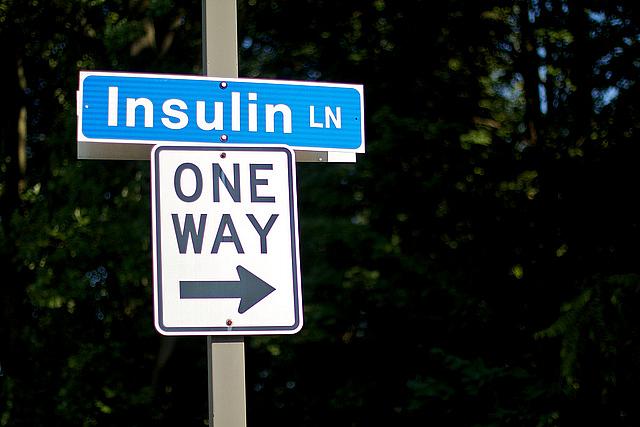Why type 2 diabetes in children is much more serious than in adults

Editor's Note: The Children’s Health Matters blog is a space dedicated to sharing important new research, policy ideas, clinical findings and journalism on child health and development. The blog features an occassional column with new insights offered by two of Children’s Hospital Los Angeles’ leading community-based research teams.
The first of the two groups is made up of community-based researchers who are tackling pediatric health challenges stemming from obesity and diabetes. Our other group of Children’s Hospital L.A. contributors is focused on severely ill children who are aging out of pediatric care and the services and benefits that formerly supported them. This post is from Nancy Chang, the lead clinical research nurse and coordinator for a large study of type 2 diabetes in youth at Children's Hospital Los Angeles.
**
When you hear the term type 2 diabetes, you might think about your grandmother, your aunt or another older adult with the disease that you may know. But a child with type 2? And yet in the past 20 years, more and more children and adolescents have been diagnosed with the disease. Many people don’t realize that kids as young as 10 can also develop type 2 diabetes, and even fewer know that when it is diagnosed at such an early age, it seems to be a much more serious than when it’s diagnosed in adulthood.
For the past 11 years I have been working with children and teens who are participating in a study called TODAY (Treatment Options for Type 2 Diabetes in Adolescents and Youth). The TODAY study, sponsored by the National Institutes of Health, was developed by a group of pediatric endocrinologists that started to see an alarming number of cases of type 2 diabetes in the 1990s. Until then, most children diagnosed with diabetes had type 1 diabetes, but with the growing childhood obesity problem, more and more children started developing type 2 diabetes. In 2007, the SEARCH study reported that up to 40 percent of all cases of diabetes in children between the ages of 10 and 19 are type 2 diabetes.
The TODAY study was a randomized controlled trial funded by the National Institute of Diabetes and Digestive and Kidney Diseases. This is the biggest clinical trial to date to evaluate treatment options for children and adolescents with type 2. It was also a much-needed study because previously there was very little knowledge on how to treat children and adolescents with the disease.
The TODAY study had three treatment groups: one group received a drug called metformin, another group received metformin plus rosiglitazone, and the third group received metformin plus lifestyle modifications. The nearly 700 patients were a diverse group of 10 to 17 year olds who had been diagnosed with type 2 for less than two years.
In the group that only received metformin, 51.7 percent of the subjects were not able to control their diabetes, compared to 38.6 percent in the metformin plus rosiglitazone, and 46.6 percent in the metformin plus lifestyle group. These failure rates of metformin monotherapy were higher than previously reported rates for recently diagnosed adults. This implies that most youth with type 2 may require multiple oral medications or insulin therapy within a few years after diagnosis to achieve good control of the disease.
Further analysis of the study’s data revealed that even when these type 2 patients received the best available treatment and close monitoring, they experienced a faster progression of co-morbidities — far more aggressive than what is typically seen in adults with type 2. The most recent findings from the ongoing TODAY study reveals that young people who develop type 2 in adolescence are heading for a future of serious diabetes related complications.
The greatest challenge to treating adolescents with type 2 diabetes is their lack of adherence to medication and, in particular, insulin therapy. Adolescents with type 1 diabetes who skip insulin treatment can immediately become acutely ill. It’s different with type 2 – even if patients don’t take their insulin for weeks or months, they rarely develop symptoms of hyperglycemia. They commonly have unhealthy blood indicators but with few or no symptoms. That’s why youth with type 2 diabetes may not have any incentive to stay on track with their insulin regimen. Without clear symptoms, they don’t always realize how sick they’re becoming.
Another big challenge that health care providers face while treating type 2 diabetes in children and teens is the lack of FDA-approved medications to effectively treat the disease. To date there are only two medications that are FDA-approved to treat type 2 in patients less than 18 years of age. The only approved oral medication is metformin. The other option is insulin. Although several pharmaceutical companies have started clinical trials for medications that are currently on the market to treat adults with type 2 diabetes, it’s going to take a few years until some of these drugs can be proven safe and effective to treat children as well.
Meanwhile, health care professionals working with these children need to make sure that parents, teachers and society in general are aware that type 2 diabetes is not the same as type 1. Type 2 is not less serious than type 1, and in fact, children and adolescents affected by type 2 have a higher risk of developing related complications than children with type 1. If these children are not treated aggressively and effectively from the beginning of their diagnosis, they will almost certainly be blind or on dialysis at a very young age. That’s an outcome we should do everything in our power to avoid.
Photo by Alan Levine via Flickr.
